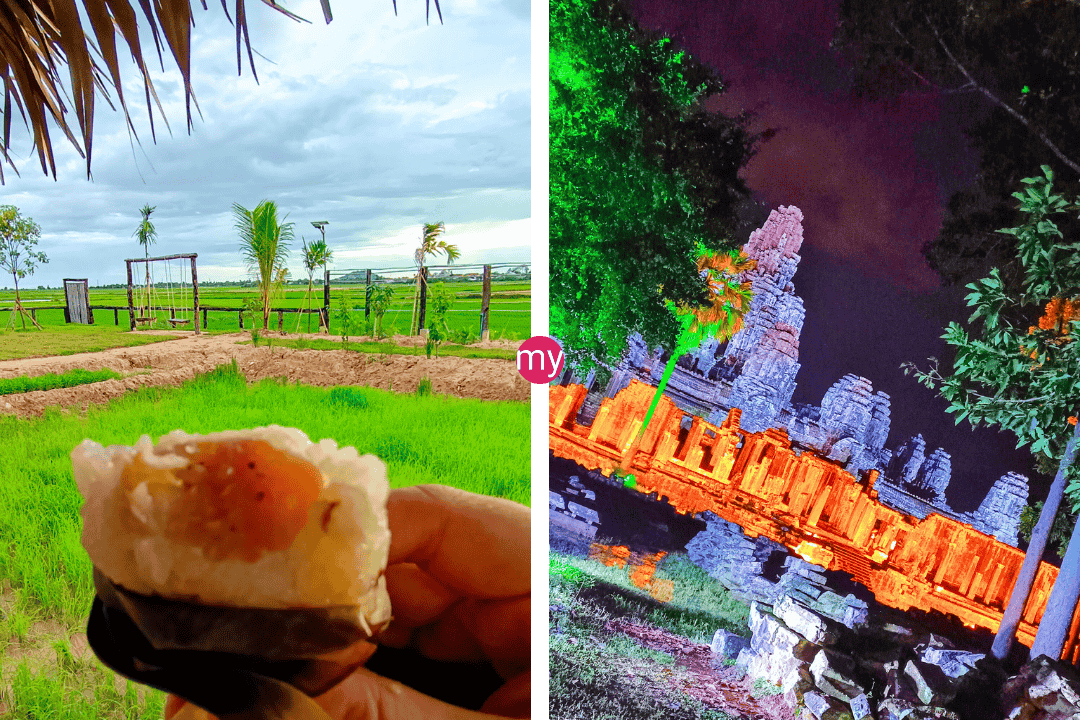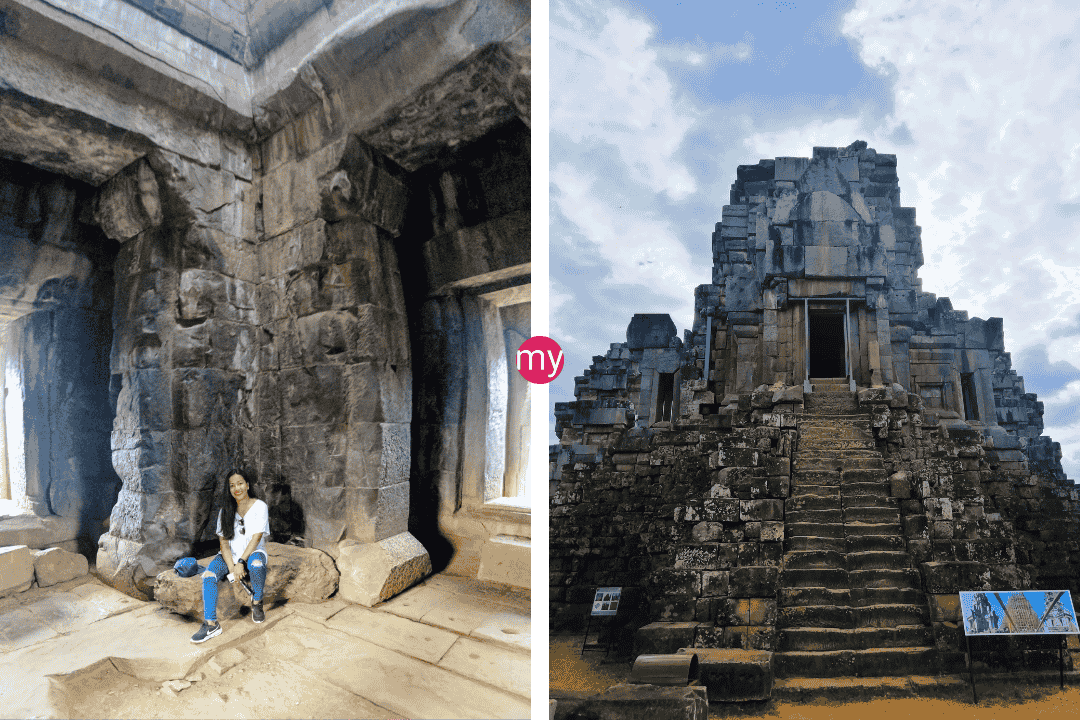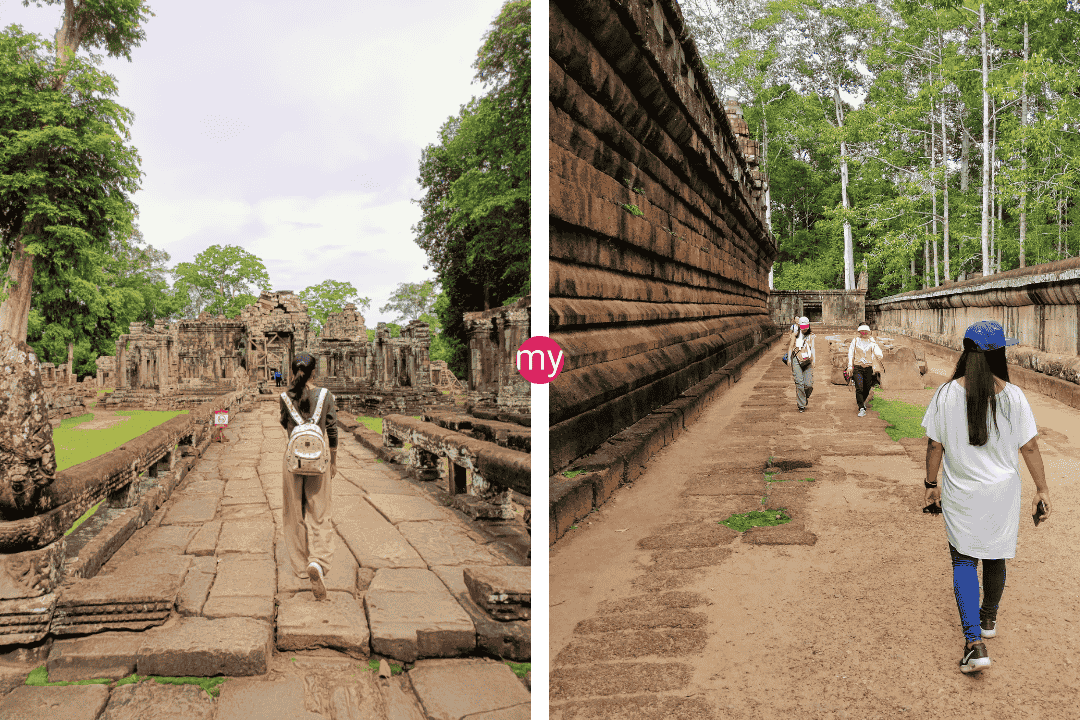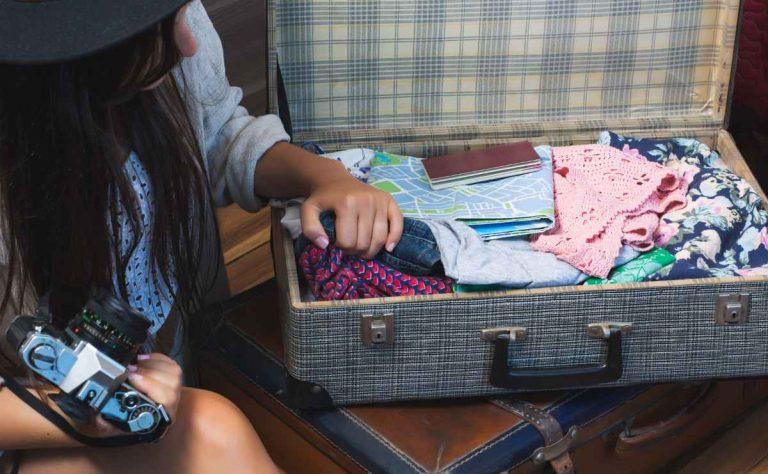
What to Pack for Your Siem Reap Tour Essentials Checklist
Mastering the Art of Packing for Siem Reap: Your Go-To Checklist
Embarking on a Siem Reap tour? Exciting times ahead! But wait, have you figured out what to pack yet? Don’t sweat it! Our handy checklist ensures you’ll have everything you need for your Cambodian adventure. Let’s turn that packing dread into packing prowess!
What to Pack for Your Siem Reap Tour Essentials Checklist
In short:
Ultimate Siem Reap Packing List: Gear up for an Unforgettable Adventure
- Pack lightweight, breathable clothes, quick-drying swimsuits, and comfy shoes for a hassle-free trip.
- Don’t forget essentials like a valid passport, visa, travel insurance, camera, and first-aid kit.
- Stay connected with smartphones, offline maps, translator apps, and Wi-Fi hotspots.
- Protect yourself from the sun with stylish hats, sunglasses, insect repellent, and sunscreen.
- Be prepared for any weather with umbrellas or raincoats.
- Carry local currency, credit/debit cards, emergency contacts, and printed itineraries for peace of mind.
- Stay hydrated with reusable water bottles and keep energized with snacks and drinks.
- Remember prescription medications and enjoy Siem Reap’s natural and cultural wonders stress-free.
Gear up and make the most of your Siem Reap adventure!
Let’s dig deep into the lists. Buckle up becasue is a long ride! Maybe I had to call it “Ultimate”…
Clothing Essentials
To make the most of your Siem Reap tour, you must dress appropriately for the climate and activities you plan to do. Pack light, breathable, and loose-fitting clothes to keep comfortable even in the heat. Don’t forget to bring swimwear or quick-drying clothes if you plan to take a dip. Choose comfortable walking shoes to keep your feet happy throughout the day. Lastly, make sure to bring sun hats and sunglasses to shield yourself from the intense sunlight.
Light, breathable, and loose-fitting clothes
To stay comfortable in warm weather, dressing appropriately is vital. Opt for airy and non-restrictive attire to beat the heat without compromising on style. Here are three key points to keep in mind when choosing light, breathable, and loose-fitting clothes:
- Choose soft fabrics like cotton, linen or rayon that absorb sweat and allow air circulation
- Select lighter shades that reflect sunlight and prevent glare
- Opt for loose-fitting ensembles that are comfortable yet stylish
It’s also essential to avoid dark hues as they absorb more heat leading to discomfort during hot summer days. Instead, opt for brighter tones that look refreshing while keeping you ventilated.
Pro Tip: Try wearing moisture-wicking socks instead of regular ones to avoid sweaty feet this season.
Why pack multiple outfits for the beach when you can just let your swimwear do double duty as your quick-drying clothes?
Swimwear or quick-drying clothes
Wardrobe Essentials for aquatic activities encompass swimwear and quick-drying clothes, crucial to making the most of your water-centered adventures. Here are some key points regarding these clothing types:
- Swimwear should be durable and fit snugly without being too restrictive.
- Quick-drying clothes made from synthetic materials such as polyester or nylon are perfect for water-based sports.
- Board shorts can double as everyday wear for casual trips out in public or on sandy beaches.
- Rashguards provide protection from the sun’s harmful rays and a barrier against jellyfish stings or rashes caused by other irritants in saltwater environments.
- Dry bags serve as essential luggage to keep your belongings dry while participating in water-centric activities like rafting, kayaking, or paddleboarding.
- Water shoes are necessary to prevent injuries when walking on rocky riverbeds or slippery boat decks.
Ensure that you select corresponding sizes wisely according to what kind of activity you plan to embark on. Lastly, Keep all attire non-restrictive.
Pro tip: As a precautionary measure, bring extra clothes and towels with you when going out on aquatic expeditions so that you always have dry garments readily available whenever needed. Your shoes may not be the most fashionable, but who needs fashion when you can walk for miles without feeling like your feet are about to fall off?
Comfortable walking shoes
To ensure comfort during prolonged periods of walking, it is important to wear shoes that fit snugly and provide adequate support to your feet. The appropriate footwear should also be selected according to the terrain and the weather conditions. Here are some essential points to consider for selecting comfortable footwear:
- Opt for shoes with breathable material that allow proper air circulation to keep your feet cool and dry.
- Choose a pair of shoes with cushioned soles that absorb shock while walking on uneven surfaces or hard pavements.
- Proper arch support is crucial to reduce stress on your plantar fascia and prevent foot fatigue. Look for shoes with anatomical insoles or custom-made orthotics.
- Choose the right shoe that fits well without causing blisters or pinching in different areas of your feet. Avoid tight-fitting or loose-fitting shoes, which may cause discomfort and lead to injury.
- Finally, always wear socks made of breathable material along with your walking shoes.
It is worth noting that investing in high-quality walking shoes can save you from many injuries in the long run. However, in case you experience new foot pain even after wearing comfortable walking shoes, consult a podiatrist immediately.
Walking barefoot has been linked to numerous health benefits, including improved posture, balance and strength. However, outdoor walks might not be practical due to safety hazards like sharp objects and uneven terrains.
Who needs a beach body when you can have a beach hat and shades to hide it?
Sun hats and sunglasses
For optimal sun protection, essential items to bring are coverings for your head and eyes. Here’s a look at why considering Sun Hats and Sunglasses is vital:
- Sun hats provide shade and reduce direct exposure from the sun
- Sunglasses protect not only the eyes but also the skin around them
- Both can add a fashionable touch to any outfit while keeping you protected
Apart from visibility, sunglasses act as a formidable barrier between the delicate skin around your eyes and the sunlight. Moreover, various labels provide different types of UV protection levels. It’s crucial to consider these details when purchasing.
Choosing proper accessories was particularly significant for Tom. Naively assuming he would be fine in sunny weather, he left his trusty cap at home. Unfortunately, Tomatoes’ skincare regimen may have worked wonders on his back – but not on his reddish scalp that was exposed to direct sunlight all day!
Pack light, travel smart, and always remember to bring a sturdy pair of shoes for when you inevitably get lost and have to walk back to the hotel.
Let’s put down a list of Key Takeaways learned until this point:
Ultimate Siem Reap Packing List:
- Pack lightweight, breathable clothes and quick-drying swimsuits for comfort and convenience.
- Carry essentials like a valid passport, visa, travel insurance, camera, and first-aid kit.
- Stay connected with smartphones, offline maps, translator apps, and Wi-Fi hotspots.
- Protect yourself from the sun with hats, sunglasses, insect repellent, and sunscreen.
- Be prepared for any weather with umbrellas or raincoats.
- Carry local currency, credit/debit cards, emergency contacts, and printed itineraries.
- Stay hydrated with reusable water bottles and keep energized with snacks and drinks.
- Remember prescription medications for a stress-free experience.
Clothing Essentials:
- Choose light, breathable, and loose-fitting clothes made from fabrics like cotton, linen or rayon.
- Opt for lighter shades that reflect sunlight and prevent glare.
- Moisture-wicking socks can help avoid sweaty feet.
Swimwear or Quick-Drying Clothes:
- Durable and snug-fitting swimwear is essential for water activities.
- Quick-drying clothes made from synthetic materials are perfect for water-based sports.
- Rashguards provide protection from the sun’s harmful rays and potential irritants in saltwater environments.
- Dry bags and water shoes are necessary for aquatic expeditions.
Now we continue with other essential key points!
Travel Essentials
To ensure a hassle-free and enjoyable Siem Reap tour, you need to be equipped with the essential travel essentials, including a valid passport and visa, travel insurance, camera, and charger. You should also pack a portable charger to stay connected throughout your trip. Lastly, pack a first aid kit to be prepared for any unforeseen emergencies.
Valid passport and visa
Travel Permit Requirements
To travel, a valid travel permit is essential. This includes a passport and visa, depending on the country you are visiting. A passport is the most crucial travel document as it identifies who you are and where you’re from.
A visa is a legal document that permits entry into another country. Different countries have different visas, including tourist, work, and study visas with varying validity periods. Therefore, it’sConfirming if your intended destination requires a visa before embarking on your travels is essential.
It’s worth noting that some countries may require additional permits or documentation beyond a passport and standard tourist visa. Be sure to research these requirements beforehand to avoid any issues during your trip.
Pro Tip: Always check the expiration date of your passport before planning international travel. Many countries require at least six months of remaining validity on your passport beyond the planned departure date.
Don’t travel without insurance, unless you enjoy living dangerously, like jumping out of a plane without a parachute.
Travel insurance
Protect Your Travel Plan with Insurance
Accidents and mishaps could happen anytime during travel, leading to financial losses and other unexpected events. You may consider purchasing travel insurance to safeguard your trip from unwanted incidents. The coverage usually includes emergency medical expenses, trip cancellation or interruption, baggage loss or delay, and various others depending on the policy.
Travel insurance could be a wise investment for frequent travelers or those planning extended trips overseas. In case of any unfortunate event like illness, terrorism or natural calamities, it helps the traveler to receive immediate support from their insurance provider.
When buying travel insurance, it is essential to read the policy in detail and understand the scope of coverage. It is also crucial to compare multiple policies to find the one that suits your requirements the most.
According to a study by SquareMouth, around 30% of all claims due to cancellations occur within two weeks before a planned trip. Therefore, purchasing travel insurance well in advance could save you a lot of trouble later on.
Capture memories and never miss a shot with your trusty camera and charger… or use it to blackmail your travel buddies, I won’t judge.
Camera and charger
As a seasoned traveler, it’s important to pack the right gear. Capturing memories is crucial for any trip, so you should consider bringing your trusty photography equipment with you on your travels. Here are some tips for Camera and charger:
- Invest in a durable camera bag
- Bring extra batteries and memory cards
- Consider a portable charger for your camera batteries
- Take advantage of different lenses to capture diverse landscapes
- Don’t forget an adapter for international outlets
It’s also worth noting that different destinations might require specific equipment, such as waterproof cameras for beach holidays or drone cameras for mountainous terrains. So always do your research beforehand.
Make sure to take care of your equipment during your travels to ensure it lasts longer. At the end of the day, the memories captured through photography will allow you to revisit the beauty of the world time and time again.
“I once traveled to Japan without my charger and couldn’t find a replacement anywhere. As a result, I missed out on capturing several once-in-a-lifetime moments. Don’t make my mistake – always double-check all your gear before heading out on your adventures.
Forgot your portable charger? Might as well start practicing your smoke signals.”
Portable charger
As we embark on our travels, carrying a device that keeps our gadgets running is crucial. The Handheld Energy Extension enables us to do just that.
- It provides a backup power source for our smartphones, laptops and other devices.
- The Portable Energy Source aids in charging on-the-go without having to search for a power outlet.
- It comes in various sizes and capacities, some even with multiple USBs slots to charge more than one device at a time.
- Their lightweight design makes them easily portable and hassle-free to carry around while traveling.
- Energy units now come equipped with features like solar panels and wireless charging to make travel even more convenient.
- To further improve efficiency, recharge the Portable Energy Source before heading out so you can avoid experiencing low-battery woes when moving about.
Additionally, various models of Portable chargers have particular specifications that may cater better towards your gadget’s requirements while others can also act as storage space.
Ensure the inevitability of staying connected throughout your vacation by grabbing one of these life-saving energy packs today. Don’t miss out on those stunning Insta shots or vital communication because of careless planning- grab a handheld energy extension before you hit the road!
Don’t forget to pack your first aid kit, because nothing ruins a vacation like a minor injury and overpriced bandaids.
First aid kit
To ensure optimal health during travels, a comprehensive medical kit is essential. This kit can be referred to as the ‘Medical Necessities’ and should contain the following items:
- Basic medication for common ailments such as headaches, nausea, and allergies
- Adhesive bandages, sterile gauze pads, and medical tape for minor injuries and wound care
- Tweezers, scissors, and a thermometer for personal care and examination purposes
Moreover, travelers should adequately research the destination’s medical facilities and known illnesses in that region to prepare further adequately. In addition to this, it is recommended to check with your healthcare provider if any vaccinations or prescriptions are essential. A true story of a group of hikers who did not have enough medical supplies on-hand during their expedition proves the importance of preparedness. A member developed an allergic reaction after consuming a new food item from their supply stash. Due to a lack of antihistamines nearby or on-hand at the campsite, one member had to hike 10 miles back to retrieve them finally. Therefore, it’s best never to overlook preparation matters before traveling. Don’t forget your passport and a wad of cash – because apparently, not all countries accept hugs and compliments as a form of payment.
Let’s put down a list of Key Takeaways learned until this point about your Travel Essentials:
- A valid passport and visa are essential for international travel. Check the expiration date of your passport and the visa requirements of the country you’re visiting.
- Travel insurance can protect you from financial losses due to accidents, mishaps, trip cancellation, or interruption, and baggage loss or delay.
- A camera and charger are important for capturing memories. Consider investing in a durable camera bag, extra batteries, memory cards, and an adapter for international outlets.
- A portable charger can keep your devices running, providing a backup power source for smartphones, laptops, and other devices.
- A comprehensive first aid kit should contain basic medication for common ailments, adhesive bandages, sterile gauze pads, medical tape, tweezers, scissors, and a thermometer. Research the destination’s medical facilities and known illnesses to further prepare.
Money and Documents
To ensure a smooth and hassle-free Siem Reap tour, you need to have all your money and documents in order. You don’t want to be stranded without the right currency, credit cards, and identification documents. In addition to those essentials, you should also have your emergency contact information, printed itinerary, and booking copies ready.
Local currency and US dollars
Going about transactions can pose significant money and document issues, especially when dealing with different currencies. It’s important to note the varying exchange rates between the local currency and US dollars. Knowing the exchange rates beforehand can help ensure that you’re getting a fair deal.
It’s best to keep a variety of denominations in both currencies when traveling as some smaller businesses only accept cash. Additionally, documents like passports and visas may require fees exclusively payable using either local or US currency.
Lastly, don’t miss out on opportunities due to lack of funds or proper paperwork. Instead, plan ahead by researching your destination’s monetary policies and required documentation before embarking on your journey. This way, you won’t be caught off-guard and can fully enjoy your travels without any financial setbacks.
Credit cards: when you want to feel rich without actually being rich, and debit cards: when you want to feel broke even when you have money in the bank.
Credit cards and debit cards
When it comes to financial transactions, electronic payment methods are more convenient than ever. One such method is the use of electronic cards for payments. There are two types of cards one can use: those for credit and those for debit. Credit cards allow users to borrow money from banks up to a certain limit while debit cards enable direct withdrawals from a bank account. A table can be used to highlight the differences between the two types of cards.
Credit CardsDebit Cards
Allows borrowing money Withdraws money directly from account
Comes with interest rates No interest rates charged
Payments made monthly Rapid transactions and direct debits
Offers reward points No reward points offered
It’s important to note that credit limits on credit cards have higher interest rates than debit card overdraft facilities. Additionally, certain credit cards come with loyalty programs and different reward schemes which could be quite beneficial in terms of earning points and redeeming them later. To ensure safe transactions, we suggest not sharing personal information or PIN numbers online when making purchases. Also, always keep an eye on the transaction amount before entering your approval code or signature. Monitoring transactions frequently helps identify any fraudulent activity early, allowing you to avoid any substantial losses. Having a fake ID might not make you a spy, but it sure makes you feel like one.
Identification documents
The documents that serve as verification of an individual’s identity are fundamental in financial transactions. These proofs of identification have to be recognized by the government and can range from national identity papers to driver’s licenses, passports, or birth certificates. Adequate identification is essential in opening bank accounts, seeking loans or insurance, filing tax returns, or voting.
Banks and other financial institutions typically request two forms of identification from their clients to prevent fraudulent activities. One of the proofs must include a photo ID that enables confirming physical attributes such as height, weight, eye color. The second proof does not require a picture but provides additional information about the client, such as their address.
Other than maintaining proper identification when carrying out various financial transactions, it is also crucially important to keep these documents in a secure and convenient storage space that makes retrieval easy.
The US Department of State records indicate that over 78 million Americans own passports presently.
Your emergency contact information might be your banker’s speed dial when you’re in a financial emergency.
Emergency contact information
It’s crucial to have immediate access to essential contacts in emergency situations. Here are six points that can be included under the category of ‘Emergency Contact Information:’
- The names and phone numbers of family or friends who can be reached quickly
- An alternate contact person, if the primary contact is unavailable
- The name and contact information for personal physician or healthcare provider
- Addresses and phone numbers for nearest hospital, urgent care facility, or other medical center in the area
- Contact information for homeowner’s insurance agent or landlord
- Information about any allergies or medical conditions which need to be considered during an emergency
In addition to the above points, including additional information like pet care instructions if applicable may also be useful. It ensures that loved ones and pets are taken care of when there’s no room for delay.
Interestingly, there have been several instances where having adequate emergency contact information saved lives. In one such incident, a person involved in a car accident was unconscious, and law enforcement could not reach anyone from their mobile phone’s emergency contact list. However, after finding a written copy of the emergency contacts list in the glove box compartment tied to their steering column bracket clip, they reached out to family members who alerted doctors about specific medical details – all within minutes. This action eventually saved their life.
Printing out your itinerary and bookings may seem archaic, but it’s a small price to pay for the satisfaction of tearing them up once your trip is over.
Printed copies of itinerary and bookings
A printed version of your travel itinerary and bookings can be useful during unforeseen circumstances. Paper copies provide a tangible backup that can be easily accessed when electronic devices fail or internet connection is not available. Therefore, it is recommended to carry printouts of your travel documents, including flight itineraries, hotel booking confirmations, tour tickets, and car rental reservations.
In addition to having hard copies, it is important to keep them organized and easily accessible. Use folders or plastic sleeves to store them neatly for quick retrieval. You can also consider keeping a copy with a trusted family member or friend in case of an emergency.
Remember, printed copies do not replace electronic versions but serve as backups in case of unforeseen events. Therefore, make sure to keep both electronic and paper documents up-to-date.
It is worth noting that some countries may require paper documentation for visa applications or immigration purposes. Therefore, verifying the required documents for each destination before embarking on your journey is advisable.
Did you know that according to the Bureau of Consular Affairs, approximately 7 million U.S citizens are reported lost or stolen passports annually?
Technology and communication have revolutionized our lives, but I still miss the days when my biggest worry was accidentally hitting ‘reply all’.
Technology and Communication
To ensure you’re well-prepared when it comes to technology and communication on your Siem Reap tour, it’s essential to pack items that will keep you connected and informed. This may include your smartphone and charger, an online or offline map, a language translator app, earphone splitters, and a Wi-Fi hotspot.
Smartphone and charger
Smart Device Power Solution
Efficiently powering your smart device is critical to ensure seamless communication. Here are six points to consider when dealing with the power supply of your smart device:
- Choose a charger that is compatible with your device’s brand and model.
- Ensure the charging cable is not damaged or frayed.
- Use an original charger as third-party chargers may damage your battery or even lead to explosions.
- Keep your smartphone away from extreme temperatures when charging, especially heat sources such as direct sunlight or car dashboard during hot weather.
- Avoid using wireless charging for long hours, which leads to battery degradation over time.
- Unplug the charger once the battery reaches 100% capacity.
Keep in mind that correct handling of power will prolong the lifespan of your gadget and prevent any unexpected accidents. Therefore, it is essential to have good knowledge and understanding about how you can maintain a healthy power source for your device while maintaining its efficiency.
Did you know? The first-ever mobile phone invented had just 20 minutes of talk-time before needing a recharge. Thank goodness we can expect smartphones’ batteries to last at least an entire day!
Who needs GPS when you have an offline map and a good sense of direction? Just don’t ask me how to fold it back up.
Online map or offline maps
When it comes to maps, the choice between online and offline is subjective. Online maps allow for real-time updates and traffic information while offline maps offer reliability in areas with poor internet connectivity. Both options have their advantages and disadvantages and the decision ultimately comes down to personal preference.
Online maps, powered by GPS technology, provide a range of features including real-time traffic data, satellite imaging, and street views. These features are all updated regularly and can be accessed from anywhere with internet access. On the other hand, offline maps can be accessed without an internet connection making them useful in remote areas or when traveling abroad without a local sim card. Although offline maps lack the real-time updates that online maps provide, they still offer reliability and can save battery life.
Unique factors such as terrain difficulty or personal navigational preferences may affect your decision when deciding between online and offline map options. Consider your daily commute or travel destinations when making this choice.
Pro Tip: Use both options to get the best of both worlds; download an offline map as a backup while still utilizing the features of the online map for real-time navigation assistance.
Finally, a language translator app that can accurately convey your insults in multiple languages.
Language translator app
With the advent of modern technology and the evolution of communication, language translator tools have become an essential part of our daily lives. These apps have revolutionized how we communicate with people worldwide, breaking down language barriers effortlessly. This allows us to interact with individuals who speak different languages in a seamless manner, irrespective of their geographical location.
One such tool is the multilingual chat app, which offers instant translation capabilities for text messages in various languages. This app has made communication between people from different parts of the world much easier and more straightforward. Additionally, speech-to-speech translator apps allow users to translate spoken words instantly, enabling real-time conversations between individuals who do not speak the same language.
Furthermore, users can also utilize camera-based translator apps that provide translations for signs, menus, and other written text in foreign languages by simply holding up their phone cameras to the text. These tools have been instrumental in bridging communication gaps and facilitating smoother interactions across cultures.
As these translator apps become more sophisticated and advanced, they continue to offer numerous benefits for businesses that operate on an international scale. Businesses can improve productivity and collaboration across team members in different locations by facilitating clear communication and reducing misunderstandings due to language barriers.
Sharing your earphones with someone is the modern-day equivalent of giving them a bite of your sandwich, except it’s more intimate and could result in a lot more earwax.
Earphone splitters
With the help of modern technology, multiple people can listen to music from one device simultaneously. One such technological innovation is a gadget allowing you to share earphones. This gadget is commonly known as an earphone splitter.
- Earphone splitters offer more convenience than traditional sharing of earphones methods: With earphone splitters, people do not have to pass their earphones from person to person when listening to music together.
- Earphone splitters work for various devices: These gadgets are compatible with most devices like smartphones, tablets, laptops, and mp3 players with a 3.5mm jack.
- Earphone splitters present several drawbacks: When using these gadgets, sound quality may decrease. Additionally, each listener will not have individual control over the volume played in the shared earpieces.
For those who want to listen to music or audio files together, an earphone splitter offers an efficient solution at reasonable costs. However, it is important to note its limitations before investing in one’s purchase.
Once my friend and I decided we wanted to watch a movie together on a flight but forgot our headphones. Fortunately, the gentleman beside us had an earphone splitter that allowed all three of us to enjoy the film while sharing his headphones. We were grateful for such unique technology!
Welcome to the Wi-Fi hotspot, where the signal is strong and the people-watching is even stronger.
Wi-Fi hotspot
Wireless access point allowing devices to connect to the internet through a local area network (LAN) using Wi-Fi technology is known as an Internet-sharing hotspot. It can be used in public or private areas like coffee shops, airports, and hotels to simultaneously provide internet access to multiple users. Hotspots are usually password-protected and can have limits on usage time and data consumption.
Routers, modems, and smartphones with built-in hotspot features mostly create these hotspots. They work by transmitting signals over the air using radio frequencies of about 2.4GHz or 5GHz. The signal range of hotspots can vary from a few meters to several kilometers depending on the type of equipment being used. Hotspot providers may also charge usage fees or tie it up with a contract.
In recent years, Wi-Fi hotspots have become essential for mobile workers who need to get online for work while traveling or in remote locations where wired internet is not available. Moreover, businesses also use them as marketing tools by offering free internet services to their customers to attract more visitors.
Pro Tip: To ensure privacy while using a public hotspot network, always use HTTPS-enabled websites when submitting personal details such as login credentials or credit card information.
I may forget my phone at home, but at least I’ll always have the anxiety and stress of not knowing if I left it behind.
Let’s put down a list of Key Takeaways learned until this point about your Technology and Communication Essentials:
- Use a compatible charger for your smartphone and avoid extreme temperatures when charging.
- Online maps provide real-time updates, while offline maps offer reliability in areas with poor internet connectivity.
- Language translator apps help in communicating with people worldwide, breaking down language barriers.
- Earphone splitters allow multiple people to listen to music from one device simultaneously.
- Wi-Fi hotspots provide internet access to multiple users simultaneously, useful for mobile workers and businesses.
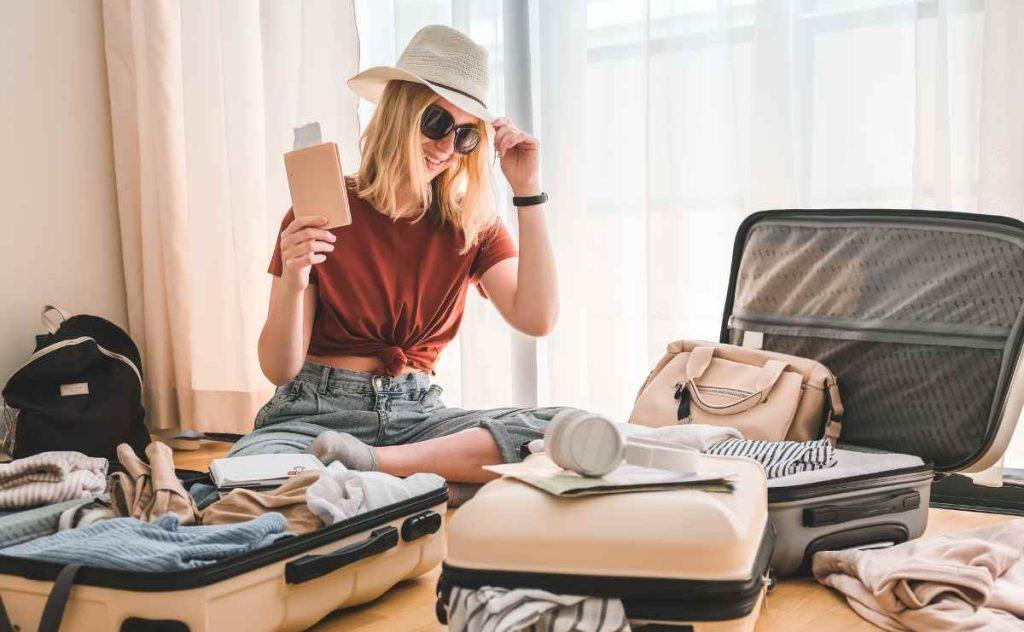
Other Essentials
To ensure a comfortable and enjoyable Siem Reap tour, you need to prepare for other essential items. Insect repellent and sunscreen will keep you safe from bugs and sunburn. An umbrella or raincoat will keep you dry during monsoons. A reusable water bottle will keep you hydrated while reducing plastic waste. Medication and prescriptions will keep you healthy during your travels. Finally, snacks and drinks will keep you energized throughout the day.
Insect repellent and sunscreen
Insects and excessive sun exposure can turn an enjoyable day into a nightmare. So protection is crucial; you’ll need more than insect repellent and sunscreen.
- Choose a product with an EPA-registered active ingredient containing 20-30 percent DEET or picaridin for the best bug-busting protection.
- Ensure you’re adequately protected from hazardous solar exposure by utilizing sunscreen with at least SPF 30 that blocks UVA and UVB rays.
- It’s also recommended to reapply your sunscreen frequently, especially after water exposure or sweating to ensure maximum coverage.
- You may want to use additional protective measures such as hats, long-sleeve shirts, and pants for extended outdoor activities like hiking or camping.
If you plan on engaging in activities near water sources, consider using waterproof versions of both products.
Although it’s important to wear appropriate clothing for outdoor activities, many questions arise about which fabric materials are most effective against biting insects.
During WWII, soldiers engaged in tropical combat conditions experienced severe infections due to insect bites. Consequently, the US Army introduced many new inventions such as mosquito netting, DDT-based pesticide dusts that helped ward off mosquitoes substantially.
Never underestimate the power of a good umbrella; unless it’s a windy day, it becomes a powerful weapon.
Umbrella or raincoat
Capturing the perfect outfit is not always guaranteed when preparing for your next outdoor adventure. But, ensuring you have a ‘protective layer against wet weather’ is essential. Here are five reasons why an umbrella or raincoat should be part of your expedition gear:
- They are lightweight and take minimal space in your backpack, allowing portability with ease.
- A sudden onset of rain can break the momentum of any activity. However, with an umbrella or raincoat handy, you can continue exploring even in pouring rain.
- These protective layers have multi-purpose use and can double as shelter from extreme heat or light winds.
- Also, keeping dry weather gear on hand protects your other belongings like electronics from water damage.
- Lastly, it’s always best to be prepared for any unanticipated changes in the weather. No one wants to end a day out with sopping wet clothes and shoes.
In addition to being aware of their benefits in wet conditions, it’s essential to ensure you invest in quality brands that provide durable products designed to last through various environments.
Make sure you pack an umbrella or raincoat on your next expedition and enjoy the flexibility to explore without fear of losing your stride due to unexpected bad weather – start now!
Finally, a way to be eco-friendly and stay hydrated without having to constantly ask your friend to share their water bottle.
Reusable water bottle
Reusable Hydration Vessel
Staying hydrated is essential to maintaining our health, and carrying a refillable water bottle is easy to achieve. The reusable hydration vessel is a crucial item for daily life.
- Reusable water bottles help reduce single-use plastic waste.
- They are cost-effective in the long run, eliminating the need to purchase bottled water frequently.
- Hydration vessels come in various sizes, materials and designs to suit different preferences and needs.
- Hydration vessels reduce exposure to harmful chemicals in plastic bottles that could contaminate the water.
- These bottles can keep your drink cold or hot for longer periods than disposable containers.
- Avoiding single-use plastic water bottles can lead to a more sustainable lifestyle and contribute towards conservation efforts.
Furthermore, most reusable water bottles are dishwasher safe, making cleaning them hassle-free.
Pro Tip: Keeping your hydration vessel handy during travel or outdoor activities keeps you hydrated without needing to buy expensive bottled drinks.
If laughter is the best medicine, then prescription meds must be the side effects.
Medication and prescriptions
When traveling, it’s important to remember your required medicines and prescriptions to avoid any health issues in unfamiliar surroundings. Ensure you keep a record of all medications with NLP tags such as dosage, name, and usage instructions. It’s essential to have an ample supply as many locations might not have pharmacies open 24/7 or may differ from the medications available in your home country.
In addition to packing prescribed medications, consider carrying over-the-counter pain relievers, probiotics, insect repellent sprays or creams, motion sickness aid if needed for emergency use. Moreover, always keep medication in their original containers labeled with pharmacy details.
Pro Tip: Create a checklist containing all the prescription drugs and over-the-counter medicines required during travel and mark them off when packing your bags.
Snacks and drinks: because nothing makes a long, dreary audit feel better than greasy potato chips and lukewarm cola.
Snacks and drinks
For sustenance, one should carry an assortment of sustenance and refreshments. Here are essential snacks and drinks to add to your list:
- Hydrating beverages like water, coconut water or sports drinks
- Energy-boosting snacks like protein bars, trail mix or granola bars
- Nutrient-rich fruits like bananas, apples or oranges
- Indulgent treats like chocolates or candies for emergency pick-me-ups
- Caffeinated options like coffee or tea to stay alert during long journeys
Remember to choose snacks with a low glycemic index that provide sustained energy throughout the day. Avoid heavy foods that may cause discomfort while traveling.
Pro Tip: Including a reusable water bottle ensures hydration access and reduces plastic waste.
Whether you’re a survivalist or a luxury lover, one thing is clear: other essentials will never be as essential as toilet paper.
“Insect repellent and sunscreen: the dynamic duo that turns a potential nightmare into a day at the Temples or at the beach.”
“A reusable water bottle: your ticket to hydration station and the eco-friendly express.”
Final Key Takeaways
- Dress appropriately for the weather and activities in Siem Reap. Pack light, breathable, loose-fitting clothes, quick-drying swimsuits, and comfortable walking shoes.
- Sun protection is crucial. Remember to bring sun hats, sunglasses, sunscreen, and insect repellent to protect yourself from the sun and insects.
- Plan and pack essential travel documents such as a valid passport, visa, and travel insurance. It is also advisable to carry printed copies of your itinerary and bookings.
- Invest in quality travel gear, including a camera with charger, portable charger, and a first-aid kit, to ensure you capture memories, stay connected, and handle any emergencies.
- Communication technology is essential. Don’t forget your smartphone, charger, online/offline maps, translator app, earphone splitters, and Wi-Fi hotspot to stay connected and navigate effectively.
- Consider the local currency and have both cash and credit/debit cards for convenience during transactions.
- Prioritize your health and well-being by packing prescription medications, insect repellent, sunscreen, and reusable water bottles for hydration.
- Pack snacks and drinks to keep yourself energized throughout the day and choose low-glycemic options for sustained energy.
- Be prepared for unpredictable weather conditions with umbrellas or raincoats.
- Lastly, pack efficiently and travel light to enjoy Siem Reap’s natural and cultural attractions without any hindrance.
What should I wear to Siem Reap?
Siem Reap has a very relaxed vibe. The standard attire seems to be a pair of hippie pants and baggy tank tops. This type of outfit is practical due to the heat. However, you don’t really want to wear anything too clingy, as it will be too hot.
What not to wear in Angkor Wat?
As Angkor Wat is a religious site, you can’t enter some temples with shorts or a top showing your shoulders. It is better to wear a T-Shirt and trousers that go below your knees. If you are wearing a tank top, make sure to add a scarf to your travel capsule wardrobe, so you can cover your shoulders with it when necessary.
What shoes to wear in Siem Reap?
As you will be doing a lot of walking, you should opt for comfortable walking shoes, such as trainers or trekking sandals. The ground on some of the temples is very rugged and you have to climb some stairs as well, so flip flops are not recommended.
What should I bring to Angkor Wat?
Don’t forget to bring a sun hat, sunglasses, sun cream with a high SPF and lots of water due to the intense heat at the temples. Also, consider bringing some medication such as painkillers, diarrhea tablets, and rehydration salts. You can buy most medication in Siem Reap’s pharmacies, but it’shaving some with you is always good.
Packing for your Siem Reap trip can be overwhelming, but with this essential checklist, you’ll be fully prepared. From clothing to electronics and documents, each item on this list serves a specific purpose and will make your adventure stress-free.
When it comes to clothing, ensure you pack light, breathable fabrics appropriate for the weather conditions in Siem Reap. Don’t forget comfortable footwear and a raincoat. Electronic devices such as cameras are also crucial to accurately capture Angkor Wat’s magnificent temples. Ensure all necessary documents such as passports and visas are in order before you depart.
It’s important to note that Siem Reap is primarily a cash society, so carrying some local currency can come in handy during daily activities such as shopping or dining out. Additionally, carrying refillable water bottles can save money while also reducing plastic waste.
Overall, packing smartly and efficiently will enhance your experience in Siem Reap by enabling you to focus on what matters most – discovering its natural beauty and cultural attractions without any distractions.
Featured
Recent Articles
Explore more on My Siem Reap Tours
Koh Ker and Beng Mealea guided tour | Banteay Srei temple tour semi-private guided tour | Angkor Wat Sunrise shared tour | Koh Ker and Beng Mealea guided tour | Morning Siem Reap floating village tour | Afternoon Siem Reap floating village tour | Private Angkor Wat special tour | Kulen Waterfall small group guided Tour | Private Angkor Wat mix temples photo tour
